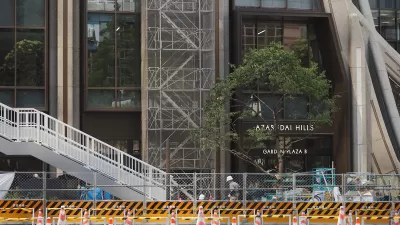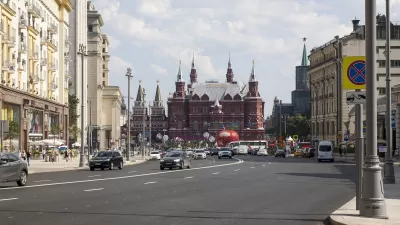Over the weekend it was announced that 71-year-old Japanese architect Toyo Ito has won this year's Pritzker Prize, the most prestigious award in the field. The jury honored Ito for combining "conceptual innovation with superbly executed buildings."
Christopher Hawthorne, architecture critic for the Los Angeles Times, discusses Ito's 40-year body of work and the Pritzker jury's "return to form" after "honoring younger and lesser-known figures in recent years..."
"[Ito] is best known for his 2001 Sendai Mediatheque, a seven-story glass box of a building that was dramatically shaken, though only lightly damaged, by the Tohoku earthquake two years ago," writes Hawthorne. "Like much of his work, it distills a series of complex technical breakthroughs into a spare, even-keeled finished product."
"For Ito, the building’s innovative structural system was the byproduct of an effort to open up space and sightlines inside; his goal was to allow as much interaction and free movement on each floor as possible, so that the building might replicate some of the urban energy of the street outside."
"Ito is the sixth Pritzker winner from Japan, joining Kenzo Tange (1987) and Fumihiko Maki (1993) along with [Tadao] Ando, [Ryue] Nishizawa and [Kazuyo] Sejima," adds Hawthorne. "In a statement, the Pritzker jury, which includes the Supreme Court justice Stephen Breyer as well as architects Glenn Murcutt, Yung Ho Chang and Alejandro Aravena, praised Ito for the ambition of his civic projects, in particular, and for producing buildings that 'seem effortlessly in balance.'"
FULL STORY: Japanese architect Toyo Ito, 71, wins Pritzker Prize

Planetizen Federal Action Tracker
A weekly monitor of how Trump’s orders and actions are impacting planners and planning in America.

Chicago’s Ghost Rails
Just beneath the surface of the modern city lie the remnants of its expansive early 20th-century streetcar system.

San Antonio and Austin are Fusing Into one Massive Megaregion
The region spanning the two central Texas cities is growing fast, posing challenges for local infrastructure and water supplies.

Since Zion's Shuttles Went Electric “The Smog is Gone”
Visitors to Zion National Park can enjoy the canyon via the nation’s first fully electric park shuttle system.

Trump Distributing DOT Safety Funds at 1/10 Rate of Biden
Funds for Safe Streets and other transportation safety and equity programs are being held up by administrative reviews and conflicts with the Trump administration’s priorities.

German Cities Subsidize Taxis for Women Amid Wave of Violence
Free or low-cost taxi rides can help women navigate cities more safely, but critics say the programs don't address the root causes of violence against women.
Urban Design for Planners 1: Software Tools
This six-course series explores essential urban design concepts using open source software and equips planners with the tools they need to participate fully in the urban design process.
Planning for Universal Design
Learn the tools for implementing Universal Design in planning regulations.
planning NEXT
Appalachian Highlands Housing Partners
Mpact (founded as Rail~Volution)
City of Camden Redevelopment Agency
City of Astoria
City of Portland
City of Laramie





























